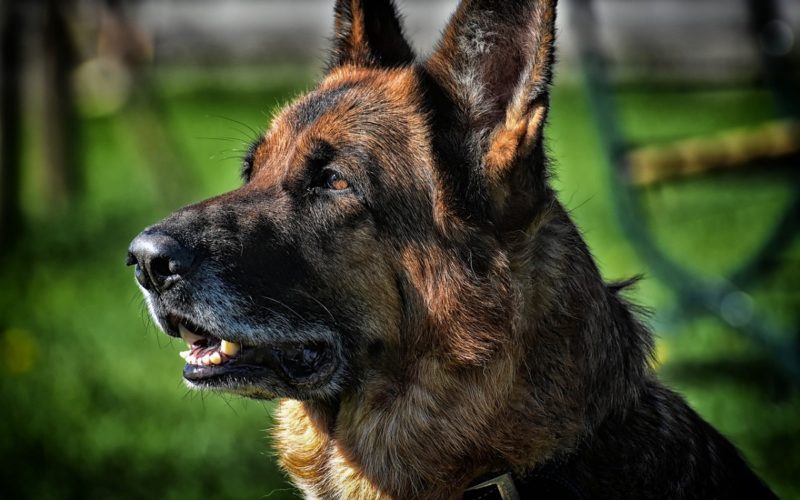Every pet owner’s worst nightmare is for their dog to get sick with some condition that is completely out of their hands. Unfortunately, hemolytic anemia is (most often) one of those conditions.
Immune-mediated hemolytic anemia in dogs is a condition that can be quite serious if the proper attention and treatment are not given to the affected dog quickly. Proper diagnosis will be vital as well as identifying any underlying cause of the disease. This discovery process can be frustrating as a pet owner, but it will take some patience to figure out all that is wrong before you can find a solution.
While hemolytic anemia in dogs is fairly common, it tends to affect certain breeds more than others. In this post, we’re going to tell you which breeds are more likely to develop hemolytic anemia, as well as the many potential causes, treatment options, and long-term outlook for affected dogs.
First, it will help to have a decent understanding of what defines anemia and how it affects the body.
What is Anemia?
Anemia is a medical term that refers to a reduced number of circulating red blood cells (RBCs), hemoglobin (Hb), or both. It is not actually a specific disease but is actually a symptom of another disease process or condition.
Anemic dogs will have a low count of RBCs and Hb because of the effects of anemia. In healthy dogs, hemoglobin delivers oxygen to the cells and tissues of the body, but anemic dogs will be oxygen deficient.
Meanwhile, healthy dogs produce red blood cells in their bone marrow, which then releases them into circulation. When the RBCs age or become damaged, they are removed from circulation and recycled to form new red blood cells. However, if anemia is present, there will be a reduction in the number of RBCs that are circulating, because of either an increased loss during circulation or a decrease in production in the bone marrow.
What is Hemolytic Anemia?
Hemolytic anemia is actually more commonly known as autoimmune hemolytic anemia (AIHA). It is a disease affecting the immune system in which the body will attack and destroy its own red blood cells.
Much of autoimmune hemolytic anemia can be gleaned from an understanding of where its name comes from. The term “autoimmune” refers to an immune reaction that is directed against the self. Hemolysis is derived from the Greek, with “hemo” meaning blood and “lysis” meaning to break open.
Autoimmune hemolytic anemia (AIHA) is thus an immune system disease wherein the dog’s body will attack and destroy its own red blood cells. Typically, dogs with AIHA are still manufacturing red blood cells in the bone marrow. The problem is, once they are released into circulation in the bloodstream, they have a shorter-than-usual lifespan.
This shorter lifespan is caused by the immune system mistakenly recognizing the red blood cells as intruders, such as a virus or canine infection, and will destroy them. Once the red blood cells have been targeted, they will either be destroyed within the blood vessels by a process called intravascular hemolysis, or will be destroyed by extravascular hemolysis if they circulate through the liver or spleen. Hemoglobin is released in excess levels in both situations and the liver will attempt to break it down, thus overworking the liver. Intravascular hemolysis generally carries a less favorable prognosis than extravascular.
 When the red blood cells don’t function properly, or the number of red blood cells falls below the normal levels, anemia can be a rather serious condition if it is not addressed. Red blood cells are incredibly important to the dog’s health, as they carry oxygen to the cells in the body and pick up carbon dioxide along the way.
When the red blood cells don’t function properly, or the number of red blood cells falls below the normal levels, anemia can be a rather serious condition if it is not addressed. Red blood cells are incredibly important to the dog’s health, as they carry oxygen to the cells in the body and pick up carbon dioxide along the way.
Autoimmune hemolytic anemia can be caused by several different underlying diseases and conditions, and a low count of red blood cells can also be caused by blood loss, low production of new red blood cells, and the destruction of red blood cells.
If the red blood cells are destroyed, it will cause a reduction in the levels of oxygen delivered to the cells in the body. This can quickly become life-threatening to the dog in cases of severe anemia, and they will require immediate veterinary attention.
What Causes Autoimmune Hemolytic Anemia?
There are actually two forms of autoimmune hemolytic anemia: primary or secondary.
In primary AIHA, a dog’s immune system malfunctions and it will mistakenly produce antibodies that attack its own red blood cells. This is the most common cause of anemia in dogs, estimated to account for around 75 percent of AIHA. There is no known cause for primary AIHA, which means it will be diagnosed by process of elimination as your veterinarian rules out secondary AIHA triggers.
In secondary AIHA, an underlying disease process or toxin will modify the surface of the dog’s red blood cells. The dog’s immune system will then recognize these altered red blood cells as foreign invaders and destroy them. If too many red blood cells are destroyed and not replaced quickly enough by the bone marrow, the dog will become anemic.
There are several possible triggers of secondary autoimmune hemolytic anemia, including:
- Cancer
- Infection
- Blood parasites (such as Babesia)
- Drug reactions to certain vaccines and antibiotics
- Snake bites
- Tick-borne infections, such as Lyme disease
- Exposure to certain chemicals and toxins, such as zinc, onions, garlic, etc.
- Bee stings or other allergic reactions
- Heritable causes
In dogs, cancer is the most common cause of secondary AIHA.
What are the Symptoms of Autoimmune Hemolytic Anemia?
Symptoms of autoimmune hemolytic anemia in dogs will vary from animal to animal and be dependent on the underlying cause of AIHA. In many situations, including when the dog has early or mild autoimmune hemolytic anemia, the dog will have very minor symptoms or may not display any at all.
However, most dogs with AIHA will unfortunately have severe anemia. The symptoms associated with severe anemia will occur because their body has turned against itself and destroyed too many of its red blood cells, leaving too few to carry oxygen to the dog’s tissues.
In an attempt to compensate for the lack of oxygen in the tissues, the dog’s heart will beat more rapidly, and the dog will breathe faster as well. The dog may even appear disoriented or faint because of low oxygen levels in his brain. Often, their gums will appear pale instead of the normal pink color.
This change in color is due to the secondary breakdown of red blood cells in anemic dogs. Their usually red-to-orange red blood cells rupture and cause yellow to orange hues to appear in the gums, skin, and even in their urine. This breakdown product is called bilirubin, which will build up in the body as more and more red blood cells rupture. The excessive levels of bilirubin are what causes the gums, skin, and other mucous membranes to appear jaundiced and makes their urine darker.
Other symptoms of autoimmune hemolytic anemia in dogs include:
- Lethargy and weakness
- Constant panting or shallow breathing
- Rapid pulse
- Loss of appetite
- Excessive thirst
- Vomiting
- Weight loss
- A heart murmur
- Black stool
- An enlarged spleen or liver
- Enlarged lymph nodes
- Hypotension
Which Breeds are Predisposed to Anemia?
Unfortunately, anemia occurs more often in certain breeds than others. It can even occur in cats, although it is more common in dogs. Predisposed breeds include:
- Cocker spaniels
- Dachshunds
- Collies
- Doberman pinschers
- Springer spaniels
- Bichon frises
- Irish setters
- Poodles
 Other breeds have suspected genetic links, including Vizslas, Scottish Terriers, Miniature Schnauzers, and the Old English Sheepdog, however, no genetic basis has been established as of yet. Dogs of all ages have been diagnosed with anemia, but it is most commonly seen in middle-aged female dogs.
Other breeds have suspected genetic links, including Vizslas, Scottish Terriers, Miniature Schnauzers, and the Old English Sheepdog, however, no genetic basis has been established as of yet. Dogs of all ages have been diagnosed with anemia, but it is most commonly seen in middle-aged female dogs.
How is Autoimmune Hemolytic Anemia in Dogs Diagnosed?
To diagnose autoimmune hemolytic anemia, your veterinarian will perform a physical examination, complete with lab tests and blood tests, as well as a urinalysis. The most common blood test for anemia is the Complete Blood Count (CBC) test. This test will measure the packed cell volume in a sample of whole blood to see what percent of red blood cells are in the sample. These red blood cells will be counted and examined under a microscope to analyze their size and shape.
If the dog has autoimmune hemolytic anemia, both the number and percent of red blood cells will be lower than normal, and they will also have an abnormal size and shape. There may also be signs of abnormal clumping of the RBCs.
If your veterinarian suspects AIHA, he or she will likely call for additional diagnostic tests to determine if the dog has primary or secondary anemia. These tests may include a reticulocyte test which will check for the number of immature red blood cells in the bloodstream, antibody tests, and blood tests to check for parasitic diseases.
X-rays may be taken to check for underlying diseases, echocardiography and ultrasounds may be conducted, and bone marrow samples may even be taken. Your veterinarian may also take a biochemical profile to evaluate organ function and electrolyte levels. The urinalysis will measure kidney function and see if there is a urinary tract infection.
How is Autoimmune Hemolytic Anemia Treated?
Treatment options for dogs with anemia will depend on the severity of the issue. During diagnosis, your veterinarian will determine your dog’s treatment plan. This will involve whether your dog needs immediate intensive care or if it can be given outpatient care.
Your dog’s specific treatment plan will be based on his individual needs, and will be based on his diagnostic test results. This treatment plan will typically include a variety of medications and some close monitoring of your dog’s vital signs. If the anemia is deemed to be life-threatening, a blood transfusion will be required.
When the anemia is secondary, treatment will first be directed at the underlying cause. If no cause can be found, then it means the anemia is primary, or idiopathic. In these cases, dogs should respond rapidly to doses of corticosteroids, possibly in addition to medications.
What is the Prognosis for Autoimmune Hemolytic Anemia in Dogs?
The prognosis for a dog with AIHA will depend on the individual diagnosis as well as the dog’s overall health at the time of diagnosis. The dog’s condition can sometimes be managed with medication and the anemia will stabilize or resolve. Relapses are unfortunately common, so you will need to monitor your dog throughout his life.
Summary
Hemolytic anemia can be a difficult condition to deal with, but getting a proper diagnosis and treating the condition accordingly will make all the difference to your dog’s well-being. If you suspect something is off with your dog and some of the symptoms match up to those we’ve listed here in this post, bring your dog to see your veterinarian as soon as you can. Even if it’s not anemia, you should get your dog checked out to make sure nothing is seriously wrong.
Sources:
“Hemolytic Anemia in Dogs – Symptoms, Causes, Diagnosis, Treatment, Recovery, Management, Cost.” WagWalking, 26 Nov. 2016, Accessed 6 Oct. 2018. www.wagwalking.com/condition/hemolytic-anemia.
“Anemia Related to the Immune System in Dogs.” PetMD, Accessed 6 Oct. 2018. www.petmd.com/dog/conditions/cardiovascular/c_dg_anemia_immune_mediated.
“Immune-Mediated Hemolytic Anemia in Dogs (IMHA).” Pet Health Network, Accessed 6 Oct. 2018. www.pethealthnetwork.com/dog-health/dog-diseases-conditions-a-z/immune-mediated-hemolytic-anemia-dogs-imha.
“Autoimmune Hemolytic Anemia in Dogs.” VCA Hospitals, Accessed 6 Oct. 2018. www.vcahospitals.com/know-your-pet/autoimmune-hemolytic-anemia-in-dogs.



